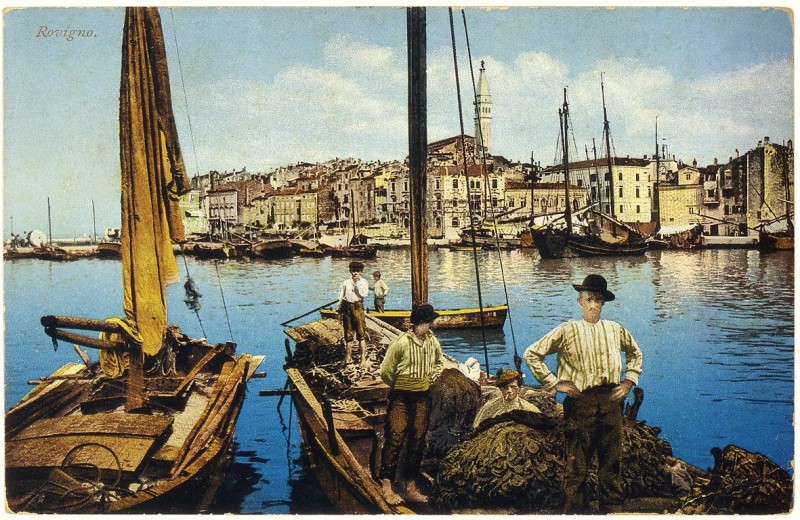Rovinj from the 16th until the 19th Century
Uskoks, while attacking Venetian possessions, penetrated into the town on two occasions (in 1579 and 1599), razed it and burnt it.
Coastal parts of Istria were settled by the refugees running away from Turkish incursions from central Istria, Bosnia, Dalmatia, and even from Greece and Albania, and the population of Rovinj grew rapidly. Emigrants from northern Italy came to Istria as well. In 1595 the town had 2800 inhabitants, in 1650 around 5000, in 1741 7966, and in 1775 the population increased to 13788. Hence the typical architecture of the old town centre: houses rose high, close to one another, leaning against the town walls. In each room, which has a chimney, lives a family.
Rovinj was an important seaport for merchant ships on their way from the Middle East to Venice, and Rovinj sailors were emphasized by their skill and courage. They proved in the battles that were waged by Venice against the Turks in the 16th century and the Candian War in 1648. The Rovinj pilots (peots) escorted merchant ships through the northern Adriatic and the Venetian lagoon. Three out of twelve Rovinj warship captains were awarded the medal of the Knight of St. Mark's. Garzotto, the central rise of the old town was named after one these captains.
During the conflicts with the Turks, Venice helped with the construction of fortifications, and the town walls were built: Porton del Ponte in 1563, and in 1590 Portizza (Sotto muro or Under the wall) was restored and solidified.
In 1650, as the risk of uskok attacks decreased, the town expanded to the areas outside the town walls on the island, as well as opposed to it, on the land by the slope where the Franciscan monastery was located. The channel and a small bridge became an obstacle in communication with the hinterland, so the channel was cluttered in 1763 and Rovinj became a town on the peninsula. During the 17th and 18th centuries Rovinj was the strongest shipbuilding, fishing and maritime centre of Istria (the fleet of sailing ships), and the most important source of white and gray stone.
As Serenissima only appeared to respect town autonomy, while in reality it exhausted people with high taxes, harsh regulations in trade and customs, Rovinj became the largest nest of smugglers and organized many rebellions followed by Venetian interventions in 1767, 1769, 1774, and 1780.
When Austria declared Rijeka and Trieste free ports in 1719 the situation in Rovinj, formerly one of the leading maritime towns on the west coast of Istria, worsened.
The Great Council of Venice abdicated on May 12th, 1797; a democratic rule stabilized in Rovinj which is governed by 18 representatives elected by the Assembly. This self-government lasted during the brief Austrian rule until 1805, and also under the French - Napoleon's Illyrian Provinces - Provinces Illyriennes, from 1809 to 1813.
In 1813 Austrians, once again in power, broke all of the Napoleon’s laws and abolished the Illyrian institutions. Rovinj, whose status of the town was confirmed in 1821, between the 1825 and 1860 belongs to the Istrian area, which, by the Imperial patent of February 26th 1861, became an independent province with the status of margraviate and it’s Provincial Assembly. Istria was divided into district captaincies, i.e. judicial districts, including Rovinj.
During the Austro-Hungarian rule Rovinj developed into the industrial, maritime and cultural terms. The development is reflected in better living conditions in the town: the whole area from the hill of St. Francis to the present-day tobacco factory was built.

